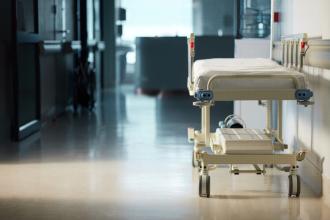Workers Compensation Act amended to include COVID-19
To be compensable under the Workers Compensation Act, an occupational disease must be due to the nature of any employment in which the worker was employed (the work causation requirement). There are two general approaches to establishing work causation: where a presumption applies and where one does not.
Where a presumption applies, the starting point is that work causation is presumed. This means that a claim can be accepted even though no specific evidence of work causation is produced. However, the presumption is rebutted if the evidence shows the occupational disease was not due to the worker’s employment.
Where no presumption applies, WorkSafeBC must determine whether the evidence in the specific case shows the occupational disease is due to the worker’s employment. In making this determination, WorkSafeBC decision-makers apply guidance found in WorkSafeBC’s Contagious Diseases policy.[1]
Schedule 1 presumption
On 20 August 2020, Schedule 1 of the Act was amended to add a work causation presumption for infections caused by communicable viral pathogens, including COVID-19. The presumption refers to infections caused by communicable viral pathogens, rather than COVID-19 specifically, to ensure it will apply to similar infections that may arise in the future. At this time, BC is the only Canadian workers’ compensation jurisdiction with presumptive legislation for COVID-19 infections. (Newfoundland does not have a specific COVID-19 presumption, but it does have a more general presumption for infectious diseases “contracted in an occupation where there is a particular risk of contamination,” which could apply to COVID-19.)
The presumption requires the infections to be subject to a BC-specific emergency declaration or notice under the BC Public Health Act, BC Emergency Program Act, or Vancouver Charter. Limiting the presumption in this way ensures it applies only in exceptional circumstances. Other common outbreaks (e.g., the common cold) continue to be adjudicated on a case-by-case basis using existing law and policy.
Under this presumption, work causation is presumed (unless the contrary is proved) if both:
- The worker’s employment involves a risk of exposure to source(s) of infection significantly greater than the public at large.
- The exposure risk occurs during the time period and within the geographical area of the BC-specific emergency or notice.
The second requirement further ensures the presumption applies only in exceptional circumstances.
COVID-19 claims statistics
As of 19 March 2021, 4314 claims have been submitted to WorkSafeBC related to a workplace COVID-19 exposure. Of the COVID-19 claims that proceeded to an allow/disallow decision, 71% have been allowed to date. (Not all claims registered receive an allow or disallow decision; some are suspended when insufficient information is available or a worker decides not to proceed.) If exposure-only claims—those where the worker was potentially exposed, tested, and/or required to self-isolate, but didn’t develop the illness, as confirmed with a negative test result or absence of symptoms—are excluded from the disallowed claims, then the allow rate is approximately 95%. This better represents the allow rate on claims where the worker developed COVID-19.
Currently, the majority of COVID-19 claims are from workers in the health care, social services, and education subsectors (e.g., acute care, long-term care, and public school districts).
—Michelle Vukelic
Research Analyst, WorkSafeBC
Further information
- Schedule 1 of the Workers Compensation Act: www.bclaws.gov.bc.ca/civix/document/id/complete/statreg/19001_09.
- WorkSafeBC’s current policies on compensation and rehabilitation for injured workers: www.worksafebc.com/en/law-policy/claims-rehabilitation/compensation-policies/rehab-claims-volumeii.
- COVID-19 claims statistics on WorkSafeBC’s website (updated weekly): www.worksafebc.com/en/covid-19/claims/covid-19-claims-by-industry-sector.
hidden
This article is the opinion of WorkSafeBC and has not been peer reviewed by the BCMJ Editorial Board.
References
1. WorkSafeBC. Rehabilitation services and claims manual, volume II. Accessed 20 April 2021. www.worksafebc.com/en/resources/law-policy/rehabilitation-services-and-claims-manual-volume-ii/rehabilitation-services-and-claims-manual-volume-ii/rehabilitation-services-and-claims-manual-volume-ii?lang=en.

